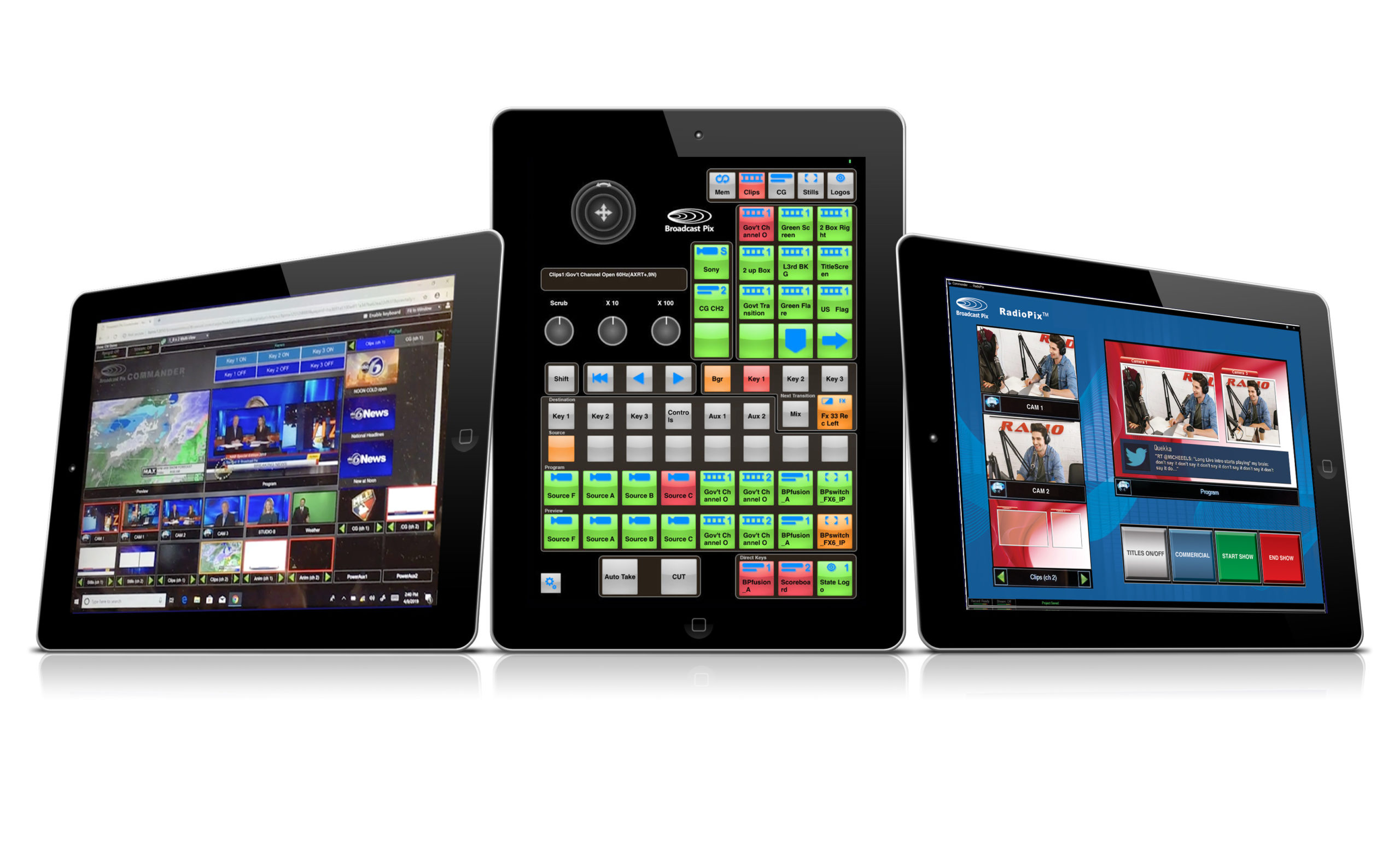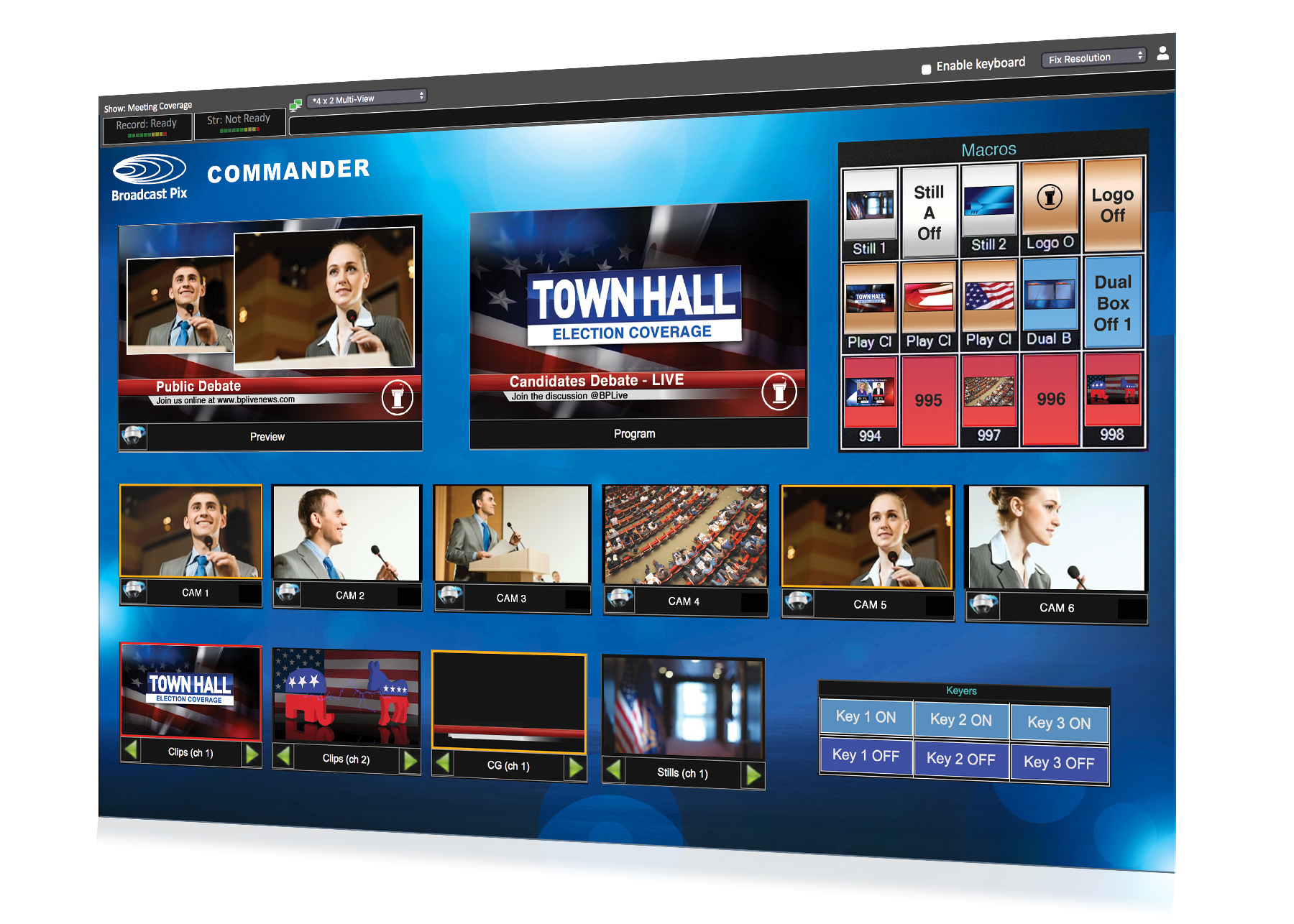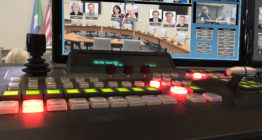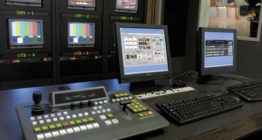Column: The five live production trends to look for

Weekly insights on the technology, production and business decisions shaping media and broadcast. Free to access. Independent coverage. Unsubscribe anytime.
The evolution of modern IPS systems are now offering content creators more control options and live production capabilities than ever before. Consumers now should consider which of the growing variety of control surface and panel options will best fit their live production needs and style. From portable to powerful, here are 5 great IPS control options for today’s users to consider.
1. Increasing use of automation making systems easy to use and accessible to everyone
Voice-activated control is an automated production trend that is most commonly associated with visual radio applications but can also be a great choice for any live event. Powered by AI and triggered to the voice-detection level of microphones, it can automate multi-camera productions such as camera moves, graphics and more. Conference rooms, classrooms, training rooms, courtrooms, town halls, council meeting spaces or any environment featuring multiple microphones can be automated to create video-follow-audio without the need for an operator or traditional control surface option.
2. Control panels: From hardware, to software, to touch screens
The traditional broadcaster’s choice, the hardware control panel features broadcast style controls in either machine aluminum or durable plastic. Available in a wide variety of sizes, they each provide full featured mixing and keying control and are best suited for fast video switching in demanding live production environments.


Hardware control panels vary by manufacturer but typically include dedicated control buttons, knobs and faders for manual live production switching. Many also feature built-in video screens for technical monitoring. This traditional choice is popular but can have a steep learning curve for new or untrained operators and come with a higher price tag than many of the other options.
Mini panels combine the power of a traditional control panel with a compact design and lower price point. Typically, the size of a notepad they can be deceptive in appearance but still provide the functions of a full-blown video switcher with a built-in DVE for picture-in-picture effects. This compact control device that is a great standalone choice or can be used as a secondary control device to an IPS system for one low price.
iPad control apps combine the power of broadcast equipment with the ease of use and the mobility of iOS devices. An affordable option for those looking to add a second control device to their IPS system, iPad control apps re-create traditional control panel layouts on your mobile device without adding expensive gear.
Users can switch camera angles, add graphics, b-roll, text, titles, effects, and more in real time from an intuitive interface. Offering great location flexibility, iPad control apps are a good choice for streaming talk shows and podcasts, meetings and company announcements, demos, education and training sessions, marketing and creative content, live events, sports, and more.
iPad apps are very affordable and sometimes free to download which offers a low-cost, reliable and satisfying solution for those who want to work without a hardware panel.
Software or virtual control panels are soft-based and often replicate the look of a traditional control panel in a web browser. Designed for speed and accuracy, these intuitive interfaces can be used by a single user to control all the live video elements of an IPS system or be used to expand production control to a second operator, such as a dedicated graphics operator. For even larger live productions, multiple software panels can enable a group of people to work on the same show at the same time.


Known to be configurable, software control panels offer the ability to get creative and customize your show settings or program layouts. This can create a streamlined user interface that could easily be run by anyone. The Remote Commander control interface from Broadcast Pix for example allows complete customization of windows and buttons, so a user can create simple three or four button panels, assign macros to those buttons and switch an entire show.
Offering great location flexibility and staff collaboration opportunities, software control panels are a growing choice for remote productions or productions that include volunteer staff members.
Touchscreen control is another modern option that offers a tactile control alternative to the traditional control panel. Great for non-experience operators or those who prefer a more hands-on experience, simply adding a touchscreen could be the control solution for you.
3. Openness and the use of MIDI Controllers
A relevantly new option, some IPS systems now offer the ability to use any MIDI controller to control their IPS software. This will likely appeal to many younger operators who are used to the various MIDI controllers available on the market today. Extremely affordable and progressive, this option is to keep your eye out for.
4. The transition to IP
Although not specifically called out, the transition to IP technology is a massive enabling factor in the development of IPS solutions and the other trends.
5. The move to remote production
The biggest single trend that will impact IPS is the ability to deploy remote solutions.
The idea of a remote production is not new – many large Broadcasters have been trying to figure out for some time how to avoid the costly deployment of equipment, trucks and people to sports stadiums to cover events. For several years, parts of the Olympics have been.
In the fast-paced world of live video production there is no second take. Do your research and before buying an IPS solution and chose something that enables you to produce content like a pro!







tags
Broadcast Automation, Broadcast Pix, Broadcast Pix Remote Commander, Broadcast Software, Graham Sharp, Hardware, IP Production, live production
categories
Broadcast Automation, Broadcast Engineering, Event Production, Featured, IP Based Production, News and Entertainment Production Systems, Voices